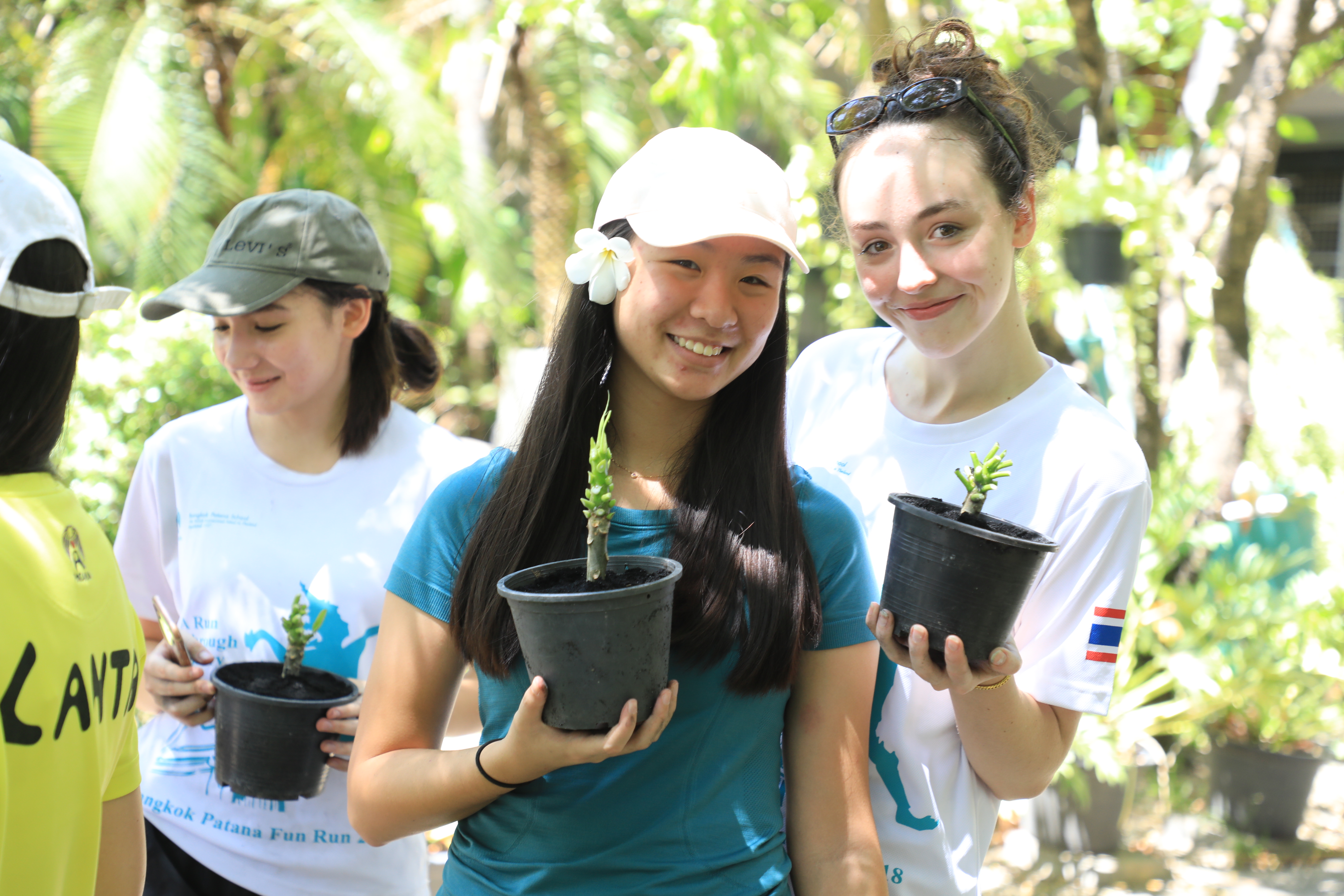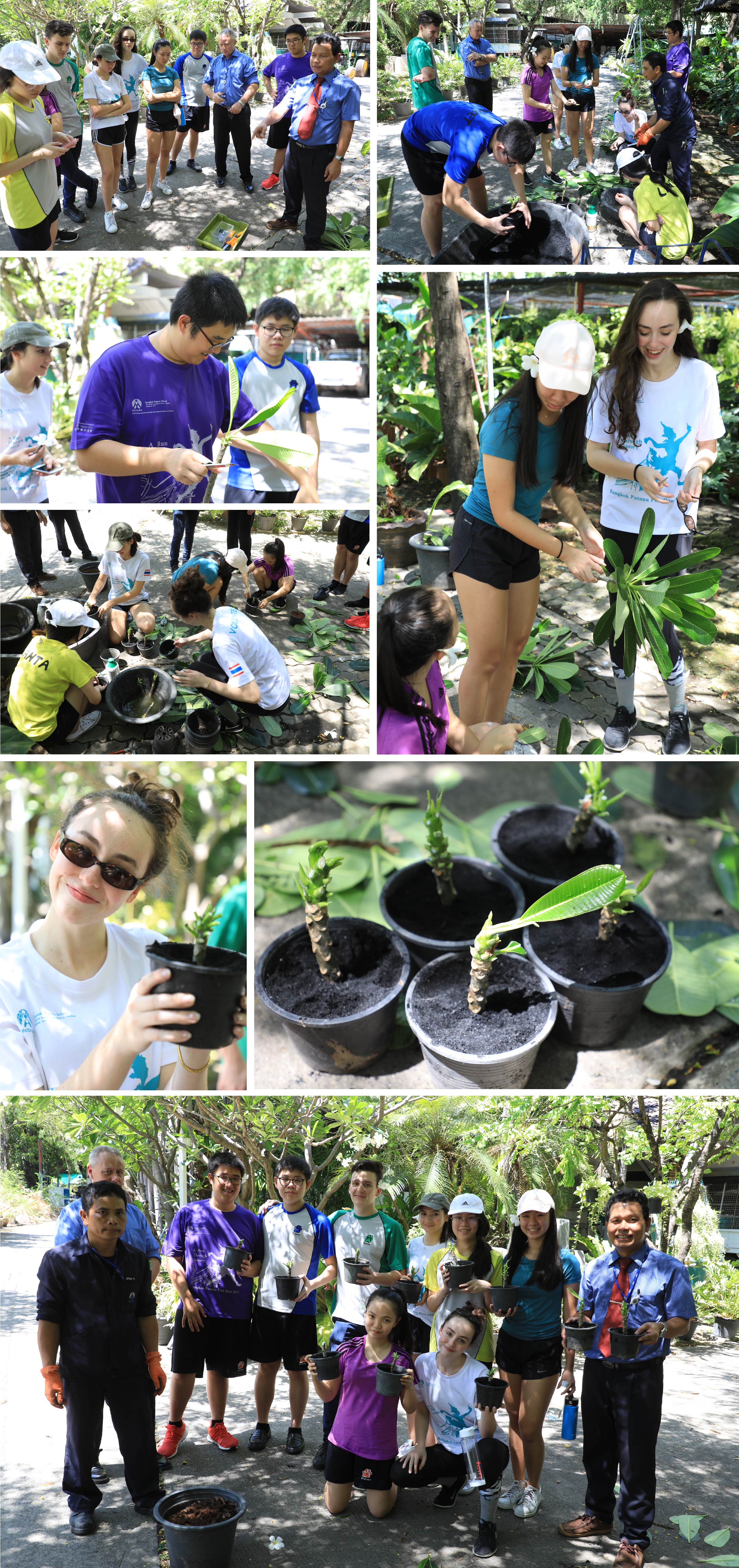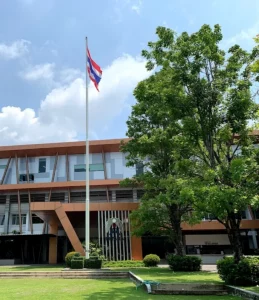
Understanding Molecular Genetics In Our School Garden
Year 12 Biology students learned traditional methods of cloning plants in our school garden, as an introduction to their molecular biology unit.
Looking at how the pretty white (or pink) Plumeria (Frangipani) can be found almost anywhere in Thailand, most people think they are Thai native species. These plants actually originated from South America and were brought into Thailand 500 years ago. In Thailand, they are widely known as Leelawadee. Despite their previous association with bad luck and sorrow, their attractive appearance and smell make them perfect decorations.
Starting the topic of molecular genetics, our Biology class made a visit to the School’s garden to study the traditional way of cloning Plumeria. The gardener first clipped some Plumeria cuttings (part of the branch) and placed them in water containing plant hormones, such as Gibberellin and Auxins, to promote root growth. Putting the cuttings in water also prevents air bubbles from forming which could disrupt the uptake of water. After carefully observing the gardener’s technique, we tried extracting the cuttings ourselves. It was challenging because we had to cut them at a specific angle and according to the gardener, the cuttings would not grow if this step was not done properly. Finally, we secured our own cuttings into pots that are filled with rice husks, which helps reduce humidity. Roots are expected to form in around two weeks time and we are all very excited to observe the growth of our very own Plumeria.
Learning traditional techniques and having experience in cloning plants will definitely give us a head start in understanding modern techniques of genetic engineering, which we will study later this term.
By Benyapa (Bam) Sukamongkol Year 12







